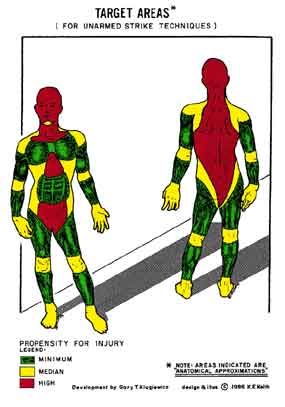The controversy about the effectiveness of impact weapons (batons) as an effective law enforcement weapon isn’t a new one. Increasing emphasis on the use of electronic control devices (TASER) adds to the controversy. But the baton remains a primary weapon in the law enforcement officer’s arsenal.
During the early 80s, when I was a newly-certified defensive tactics instructor, we had the infamous Professional Wrestler incident in Waukesha, Wisconsin. This is the incident when Ken Paterra and Mr. Saito terrorized and battered two officers before additional officers arrived. Batons were use extensively but without effect. The question then and now is how effective are batons, really, for stopping violent subject behavior? The answer is that it depends on the “totality of the circumstances.”
• What are the facts of the case?
• How dangerous was the subject?
• Who was the officer?
• What type of baton was involved?
• Where were the baton strikes directed?
• How powerful were the baton strikes?
The bottom line is that baton strikes can be extremely useful in controlling a violently resisting subject. This was the case of another classic law enforcement Wisconsin incident involving Bob Willis, a nationally-known martial artist and police trainer. He arrived at a scene where other officers were dealing with a large, strong, verbally resistive subject threatening to beat up any officer who came near him. It’s worth noting that he was also claiming to be a black belt.
The officers at the scene thought they were going to see some martial arts moves when Bob arrived but instead saw Bob draw his baton and use one powerful strike to the subject’s legs. This resulted in the subject grabbing his leg before sitting down on the ground while continuing to hold onto his leg and simply saying “I don’t want to resist anymore.” So here we have one baton failure and one baton success story. How do we insure more successful deployments of the baton?
The truth of the matter is that batons can be very effective in controlling violently resisting subjects but this requires three mandatory components:
1. The officer must have the “right” baton available — usually on their duty belt
2. The officer must strike the parts of the body that will create the best muscle dysfunction
3. The officer must be able to generate enough force to knock down the subject
Increasing Your Baton’s Effectiveness
All three requirements come back to training. If the officer is properly equipped and trained s/he can be very effective with a baton. If not, they most probably will not be effective. The question becomes: what kind of baton should you carry and how should you be trained (and re-trained) with your baton? The first part of the equation is pretty easy. What baton should you carry? Although this is often times decided by your agency, officers are often empowered to decide what version of a certain type of baton that they are authorized to carry. There have been many discussions over the years to whether a light baton is more effective than a heavier one.
I — both personally and professionally — have always favored the longer (26 inch) and heavier expandable baton. Some instructors favor lighter ones. To me, what’s more important is the length of the baton. The officer has to be able to comfortably carry the baton on their duty belt so length and weight are issues. The question becomes: how effective are some of these shorter (16 inch) batons that some officer carry? In terms of knockdown power and being able to maintain distance between the officer and the subject, these shorter batons are less desirable and effective. It is kind of like the discussion of whether an officer should carry a smaller or larger caliber firearm. Yes the lighter, smaller frame, smaller caliber weapon is easier to carry but what if you need to stop a larger, more dangerous threat. Think about it.
Once an officer has made a decision to carry a baton, then target areas and power development become important. Target areas for the trained application of a baton strike are designed to provide a high propensity for control while minimizing the possibility of long term injury to the subject. See the green areas on the chart above and to the right. But much like accuracy with a firearm, under real world conditions affected by stress, movement, and low light, accuracy suffers under the “dynamic application of technique.” This is why unintentional strikes to the yellow areas and even red areas on the chart happen. There are even times when the officer may need to use his/her impact weapon as an instrument of deadly force to protect his/her life or the lives of others. This is what the “not trained but justifiable under the circumstances” application of technique. If you want to shoot someone but can’t, you may need to use your baton to stop the threat by intentionally striking the head neck or other vital areas.
The final component of your effectiveness with a baton deals with your ability to generate knockdown power. This is impacted by the length and weight of your baton and your ability / training to effectively strike with baton. Personal power development is made up of you personal strength and your ability to manipulate the baton to deliver the most knockdown power. Power development begins with your personal strength. While an officer can’t do a lot about how large their frame is they can do a lot to increase their physical strength.
See James DiNaso Police1 Video Tactical Tips on Power Development or check out his website www.pkcotraining.com. I am always amazed at the time some officers spend on their firearms skills while minimizing their physical conditioning and defensive tactics training. What are you more likely to use is a physical confrontation your firearm or your empty hand and intermediate weapons?
The ability to manipulate the baton effectively begins with familiarizing yourself with your baton using performing strikes in the air — start slowly while slowly increasing both speed and power. Then move on to striking a heavy bag, a striking dummy, or striking shields.
Working with the striking shield is where officers are able to build their accuracy and striking power with their batons. Watch the LETN Video (to the right, above) demonstrating Mike Nakamura’s of the FBI power development drill.
Once you have gained proficiency with your baton using the striking shield, you are ready to progress to the use of training batons using touch drills to the appropriate target areas. Protective training gear can now be used to build an officers confidence and striking accuracy. Movement, relative positioning, and environmental factors can now be added to increase the realism of your training. Finally, high level decision-making scenarios can now be conducted to put your verbalization, tactics, and weapon systems together.
Conclusion
The baton remains a formidable police weapon. But like any weapon, its effectiveness will depend on its application, the type of baton used, as well as the training time and physical strength of the officer utilizing it. Don’t short change your baton training. If the officer needs it, s/he will need to be effective with it. Good equipment and good training will make this possible.



